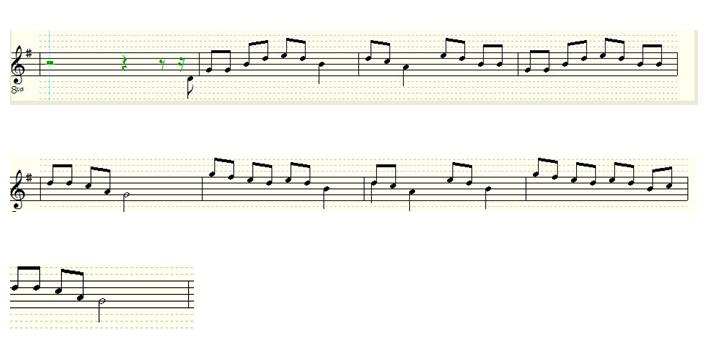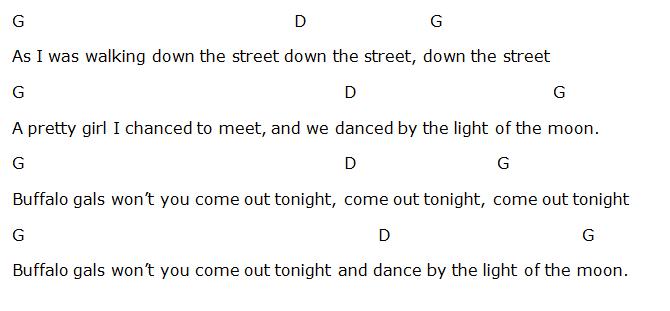Fiddlewidget for String Teachers
| Home | What's a Fiddlewidget? | Suppliers | Fiddlewidget University | Instruments |
Activity 1--Chord Progression
Time required:5-10 minutes
Materials:
1. Printed copies of a tune, with underlying chord changes. This can be in music notation
form, or tablature, or even just copies of the words with the chord changes shown. I use the latter, since many
of my attendees don't read music, and with different instruments in the mix, tab isn't that useful.
2. One or more musical instruments for the instructor to play simple chords along with the melody- this
could be a piano, guitar, or any instrument that can play multiple tones simultaneously. Even a violin is ok,
but you can of course only play two notes of the triad at once on that instrument.
Selecting a tune for study
I like to start first with a simple tune that students probably know, or at least have heard.
I know I'm going to introduce the concept of an underlying chord progression, so I try to keep that simple as
well; just the root, dominant and subdominant (1,4 and 5) is usually plenty, or even just the root-dominant
(1 and 5) if you can find one that's fun to play.
I work mostly with bluegrass and old-time Americana music students, country and rock not so much, and classical
almost never. So your best choice may not be the same as mine.
But just for starters here, let's go with "Buffalo Gals". You can get by with only two chords, it's easy to
remember, not too fast, and it has words, which makes it easier to keep your place.
Plus, it was written by a minstrel singer named John Hodges in 1844, which means there shouldn't be too many
copyright issues.
Buffalo Gals---Music notation:
 Lyrics and Chords:
Lyrics and Chords:
 But in any event, all we are doing here is sing the song with the class, while changing chords at the
appropriate time. Do it several times, and mess it up on purpose some, to get the idea across that the notes
of the melody fit some chords and not others. Then you are ready to move on toward what a major chord
actually is.
But in any event, all we are doing here is sing the song with the class, while changing chords at the
appropriate time. Do it several times, and mess it up on purpose some, to get the idea across that the notes
of the melody fit some chords and not others. Then you are ready to move on toward what a major chord
actually is.
Available from nationally known music suppliers, or call Bruce Haney at (423) 349-6715
or
email at bfhaney@chartertn.net.